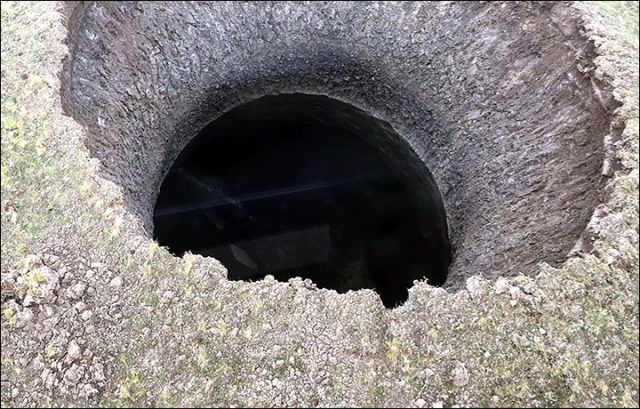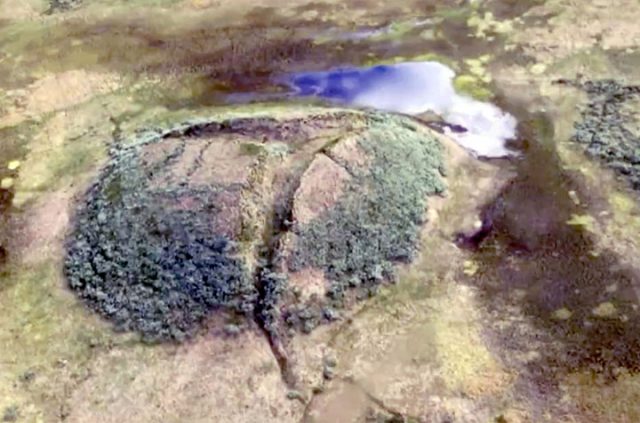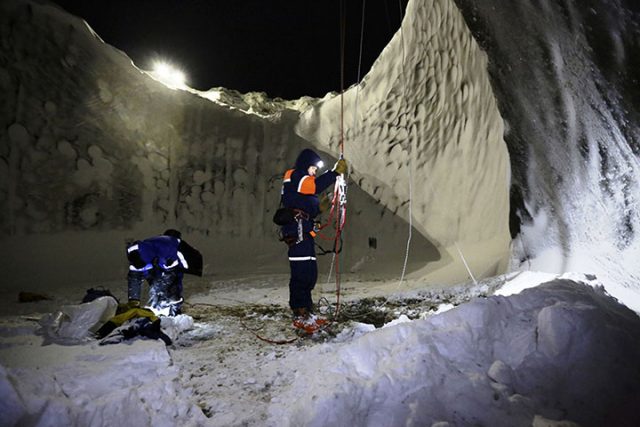Because of climate change and the melting of permafrost in Siberia, craters have begun to appear across the icy tundra on the Yamal and Gydan peninsulas.
The craters are exploded heave mounds or pingos that occur as the buildup of methane gas in pockets of thawing permafrost under the surface that when the pressure is the greatest explode hurling ice and soil into the air along with the methane gas.
A pingo is defined by sciencedirect.com as “formed when water, rising by hydraulic pressure through gaps in the permafrost, freezes and uplifts a mound of ice covered by a layer of alluvium.”

The bad part is that seventeen more craters have formed and the database the scientists are creating by studying this phenomenon lists well over seven thousand heave mounds on the Yamal and Gydan peninsulas.
The areas considered the most dangerous are north and south Tambey near the town of Sabetta and the Seyakha area.
According to siberiantimes.com, the most notable, so far, is the crater dubbed C1 in the central Yamal Peninsula which exploded in 2014 sending material almost three thousand feet into the air. The crater that remained was about eighty two feet in diameter and about one hundred and sixty four feet deep.
By the fall of 2016 it had filled with water forming a lake. The website tells of a woman who was so intrigued by a pingo she visited it every day.
One day she felt tremors in the ground which she described as “the earth breathing.” Fortunately, the tremors frightened her and she ran away with the pingo exploding right after. The force of the explosion would surely have killed her.
Professor Vasily Bogoyavlensky of the Russian Oil and Gas Research Institute in Moscow claims that about four to five percent of the pingos are dangerous and is encouraging other scientists to look for ways to release the gas before an explosion occurs.

Dr. Bogoyavlensky has suggested pumping the gas out slowly but that could be dangerous in inexperienced hands.
The research paper by Sergey N. Buldovicz of Lomonosov Moscow State University and his colleagues at nature.com claims the phenomena is due to cryospheric processes.
Not all pingos are dangerous as some release only gas but there is presently no way to differentiate between the mounds.
Some pingos will cave in rather than explode when the ice core begins to melt. A pingo can take years to build up but the pingos on the Yamal peninsula are forming three times faster than areas in Northern Canada and Alaska.
There are about thirteen thousand pingos in Tuktoyaktuk, Northwest Territories in Canada, about one quarter of the world’s pingos.
Central Alaska has hundreds of pingos according to a paper published by G. William Holmes, David M. Hopkins, and Helen L. Foster for the United States Department of the Interior.
The hills range from the Canadian border to the lower Yukon Valley and appear in places such as Manley Hot Springs, the Mackenzie River delta area, Mount Hayes, the upper Tanana River valley, the Tanacross area, Fairbanks Creek, McKinley Creek and the Pioneer Creek valley.

They range from fifty to one thousand four hundred feet in width and ten to one hundred feet in height and are usually circular or elliptical shaped. Central Asia has pingos at the highest elevations including the Tibetan Plateau at thirteen thousand feet and Canada’s Tuktoyaktuk Peninsula has so many they have established the Pingo National Landmark area.
The tallest pingo in Canada, the Ibyuk Pingo, can be found here at one hundred and sixty feet tall and adds a few inches every year. Greenland has its share of pingos with over one hundred of the hills.
Another Article From Us: Archaeologists Dig Up Samauri’s Jar Filled With Over 200,000 Bronze Coins
They are mostly found in Disko Bay, on the Kuganguaq alluvial plain on Disko Island and Nuussuaq Peninsula in western Greenland and in the eastern area near Nioghalvfjerdsfjorden which are also growing.
